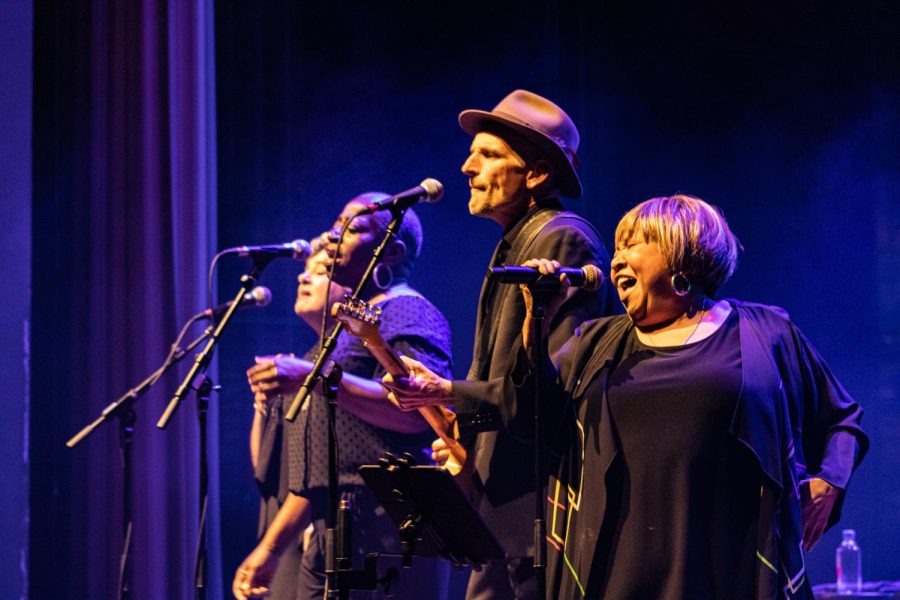‘For What It’s Worth,’ Mavis Staples lights up the Egyptian Theatre
Mavis Staples singing with power during her set on Friday night. (Sean Reed | Northern Star)
February 6, 2023
Mavis Staples played to a packed audience at the Egyptian Theatre on Friday night, marking her first-ever performance in DeKalb.
The NIU Concert Choir and the NIU Black Choir opened for Staples, performing a brief set together. Their lively performance fit quite well on a bill with Staples, giving her the perfect introduction.
One of the Egyptian Theatre’s best qualities is the intimacy of the venue. At a venue like the Chicago Theater, the performers often feel distant and it can be difficult to see for anyone who isn’t seated in the very front rows. While the Egyptian’s interior has a comparable level of classic, art-deco sophistication, one feels a much deeper connection to the performances due to its smaller size, which made the perfect environment for someone like Staples to perform.
Staples began the set with a cover of Buffalo Springfield’s “For What It’s Worth,” which she first recorded with The Staples Singers in 1967. Her backing band, especially guitarist and bandleader Rick Holmstrom, did an excellent job providing music that felt authentic to Staples’ style. The way the band played many of these songs sounded like they could have been the original recordings from the 1960s and ‘70s.
Given Staples’ history of choosing unique covers to perform, it was exciting to watch the show with no idea what song she might cover next. One particular crowd-pleaser was a cover of Funkadelic’s hit, “Can You Get to That.” The joy and excitement in the audience was palpable from the second that Holmstrom began to play the song’s iconic opening riff. Even more unexpected was a cover of “Slippery People” by Talking Heads, which frontman David Byrne covered with Staples at the Apollo Theater in 2019.
At 83, it was clear that Staples’ age is beginning to catch up to her in performances. She frequently took breaks to sit in front of the drum set and rest during and in between songs. However, this was not at all a detractor. Any age-related frailty that Staples exhibited only worked to make her performance stronger and more emotional. She may not be running and dancing around the stage, but the sheer power of her voice shone through the entire set. She seemed fatigued at times, but there was never a single moment where her infectious energy faded.
At the moments where Staples needed to take a brief pause, bandleader Holmstrom seamlessly filled in and led the band, making her breaks barely noticeable. The dynamic give-and-take between Staples and Holmstrom made the show all the more enjoyable.
Musicians of Staples’ generation often face criticism for performing into their 70s and 80s. People prefer to remember their favorite artists at their peak instead of their later years. With Staples, however, this was not the case. It’s quite rare to see an audience as involved and as engaged as the audience at the Egyptian was on Friday. When she played the final song of her set, The Staples Singers’ “I’ll Take You There,” nearly everyone in the audience was standing up, dancing, and singing along. Staples’ commanding stage presence has the ability to make even a reserved person like myself stand up and embrace the music.
In a small town like DeKalb, it feels much more impactful and meaningful when a legend like Mavis Staples comes to visit us than it would in a large city like Chicago or New York City. There’s no better way to spend an evening than hearing a performance by such a pivotal figure in music history.



